The Inbound Marketing Myth – DANGER for Physical Therapists
Updated February 15, 2022, and August 11, 2019. Original post January 9, 2012.
The Inbound Marketing Myth For PTs – Can You Really Rely On The Internet and Social Media For Your Marketing Success?
When I posted the original version of this article in 2015, I remember the feeling of pending doom for traditional outbound marketing channels like direct mail, radio, TV, and print ads. After all, the influence of social media and search engines (inbound marketing platforms), was just getting started. But now, seven years later, it’s clear to me that outbound marketing has not been pushed aside by the new “inbound” style. Instead, because advertisers still need to break through the digital clutter to reach their audience, outbound is growing in importance.
If you’re not sure about that, ask yourself why the biggest brands on the planet are expanding budgets for broadcast, direct mail, and other more “traditional” forms of advertising faster than for inbound – $3.6 million (plus multiples of that for production costs) for a single 30 second super bowl ad – really? “Outbound” marketing isn’t going away. Instead, its importance and complexity is growing.
As a result, independent outpatient clinics need to consider what this means for their own marketing strategies. For example, are you missing out if you don’t invest time and money in Instagram? Do you have Facebook FOMO? Will you acquire more new patients through your website or a neighborhood mail campaign?
Inbound and Outbound Marketing Strategies – What’s The Difference And Why Should You Care?
According to Wikipedia, the term “inbound” marketing was coined by Brian Halligan, founder of Hubspot in 2005.
I take issue with this definition, particularly with respect to outbound marketing. I don’t know any other trained marketing professional who would include “spam” and “buying attention” as an outbound marketing strategy. In fact, you could easily go the other way and restate the inbound definition with stuff like “buying attention” and “spam” as well.
With that definition in mind, Halligan co-authored the book “Inbound Marketing” with his MIT peer and business partner Dharmesh Shah. If you read the book you may conclude that “outbound” marketing budgets should be diverted to inbound or cut altogether.
And you don’t need to read inbound marketing books to get stuck focusing on your website and social media marketing. Afterall, they can be done on the cheap! So then, how should a PT clinic split its effort between inbound and outbound marketing? For example, if you had $1000 to spend and needed to choose between pay per click (PPC) advertising and direct mail, which should you choose?
To better answer these questions, it helps to take a closer look at two practical problems with inbound marketing.
Two Inbound Marketing Problems For Independent Outpatient Clinics
Problem 1:
The “inbound” mentality sits back and waits for prospects to find you through your digital content. From a physical therapy marketing standpoint, that can be deadly. That’s because most small and mid-sized clinics don’t have the resources to play the inbound game competitively. It takes lots of money, time, and talent to pull off an inbound strategy. For most clinics, this just isn’t a practical approach.
Why is it not practical? Back pain is a good example. For most consumers, PT for the back is “something you do only when your doctor tells you to do it.” This means most people don’t even think about physical therapy when searching for content about back pain. To fix this with an inbound strategy, you’ll need to create and maintain back pain content – LOTS of it. And while you’re busy doing that, you still HAVE NO CONTROL over when it will appear in search results. Instead, you give control to the search engines. They decide if and when to display your information; they decide if you will rank high enough to be seen by your audience.
When it comes to new patient acquisition, outbound strategies like direct mail can work better for PTs. Outbound gives you control. You decide what information to send AND who to send it to.
But even if you could succeed with an inbound marketing campaign, we still have problem number 2.
Problem 2 – It’s Just Simple Math:
The second problem with the inbound philosophy for PTs is mathematical. In the back pain example, you have two groups of prospects. One group already knows they want PT and are ready to book. The other group is still considering diagnosis and treatment options. About 2% are the “ready to book” group. The other 98% have some level of interest in back pain treatment options, but many, if not most, are not actively seeking information. Instead, they are living with the issue or waiting for a physician to tell them what to do. Hence, most back pain prospects are not even on the “inbound” search spectrum for a PT.
Problem 2 is fixed with an outbound strategy like direct mail. This explains why direct access new patient acquisition rates are much higher with outbound channels than inbound. It also explains why we recommend spending your theoretical $1000 on direct mail, and not PPC.
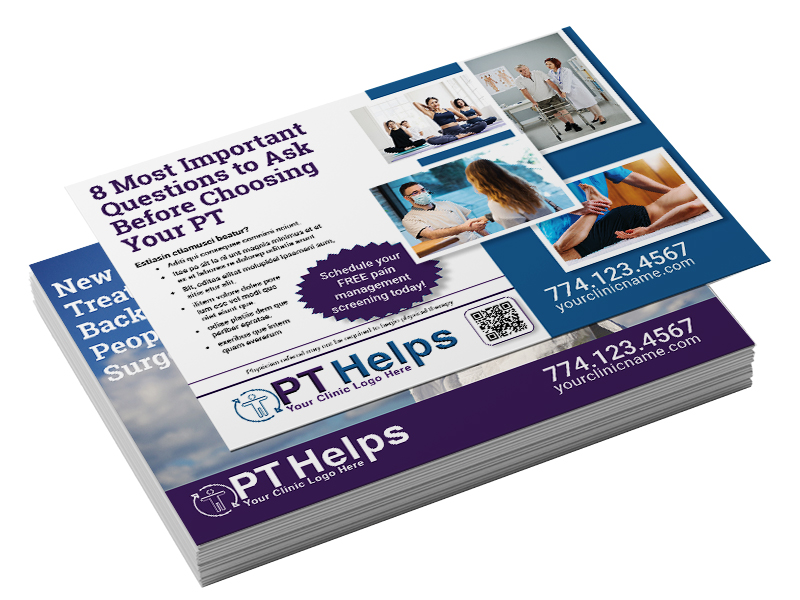
A Word About Local Search For Outpatient Clinics
My remarks today tried to help make it easier to think about when to choose inbound and outbound marketing strategies. To make my point I ignored the most important inbound consideration for outpatient clinics – “local search.” Instead, my remarks were based on “informational search.”
Informational Search Versus Local Search, What’s The Difference?
Local search results display maps and reviews, like the one pictured below on the left. Note that informational search, like the one below on the right, looks much different.
PT clinics should not neglect their inbound marketing for local search. Fortunately, managing local search is much easier than informational search. That’s because when a searcher already knows they want PT, you need to be optimized for appearance on Google and Bing maps, patient reviews, and select online directories. With local search, you’re not competing with the guerillas of inbound marketing like the ones pictured in the informational search example below.
Local Search Result Example
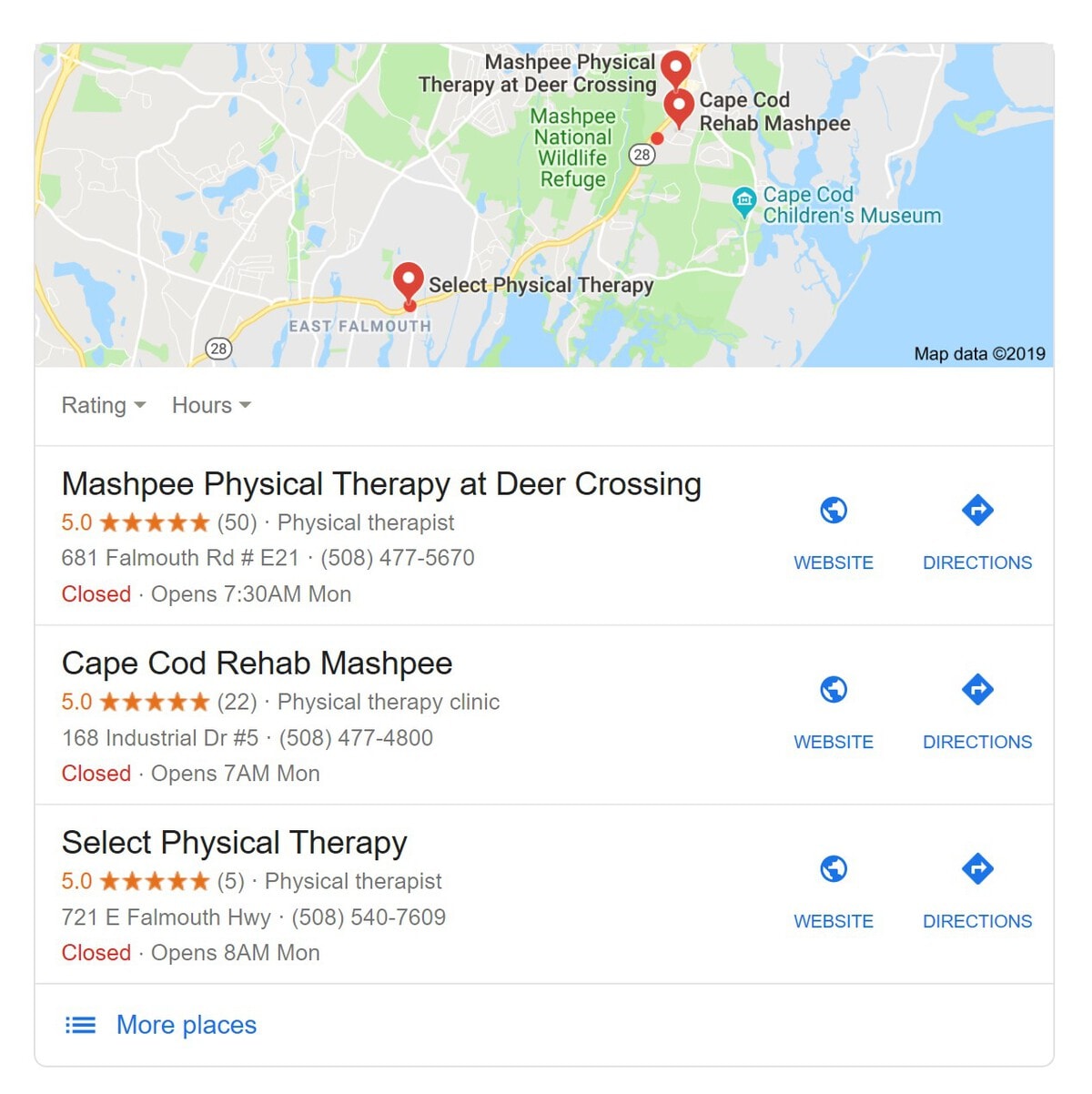
Informational Search Result Example
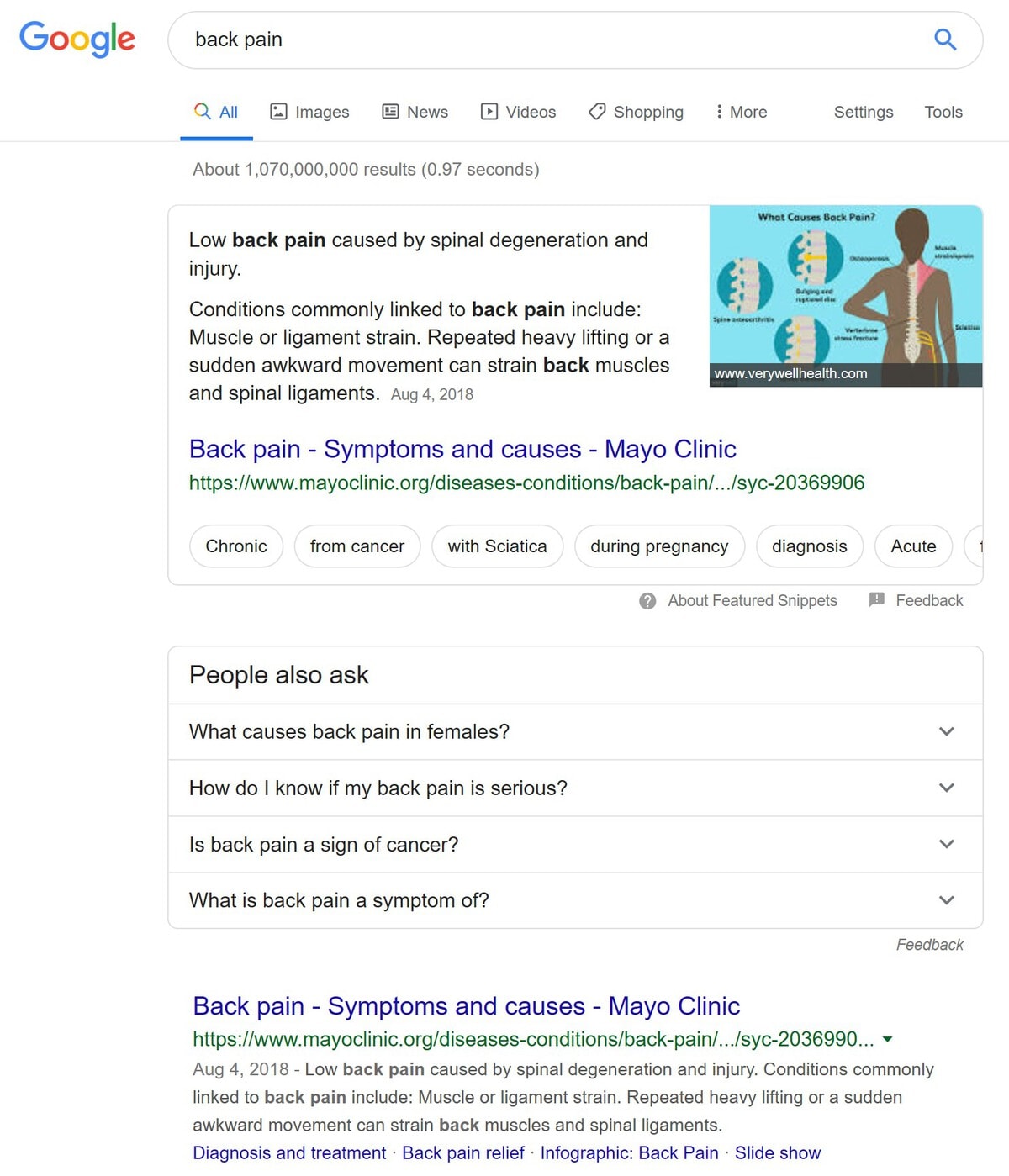
PT Referral Machine Newsletter Signup
Stay up to date on the latest trends in marketing for physical therapists – From The Trenches.





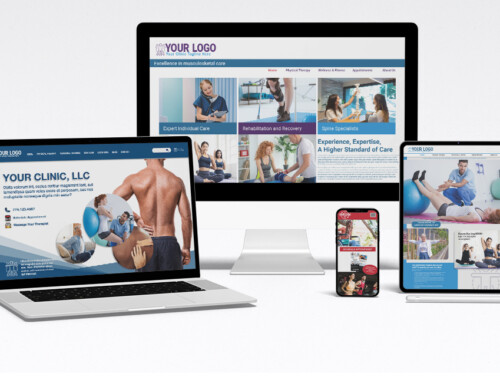
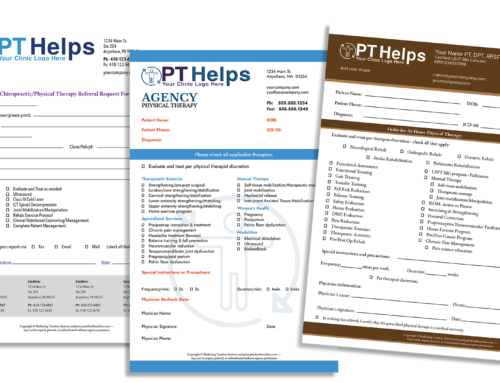


Leave A Comment
You must be logged in to post a comment.